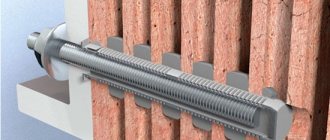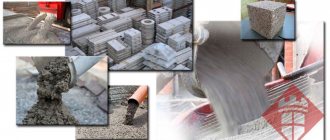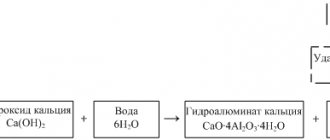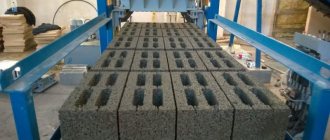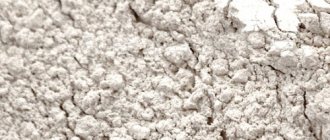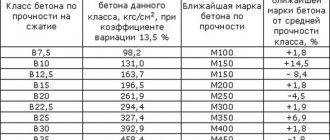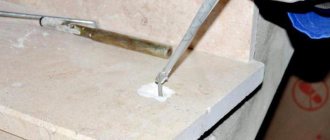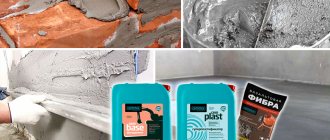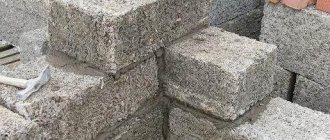Portland cement. Raw materials, concept of production, chemical and mineral composition of clinker.
Definition and classification. Portland cement is a hydraulic binder obtained by finely grinding Portland cement clinker with the addition of gypsum. Gypsum dihydrate in an amount of 1.5 ... 3.5% is introduced to regulate the setting time of Portland cement. Portland cement clinker is a product of firing before sintering of a raw material finely dispersed homogeneous mixture consisting mainly of limestone and clay. This composition of the raw material ensures the predominance of highly basic calcium silicates in the clinker.
1) Additive-free - the introduction of active mineral additives is not allowed; it is obtained by grinding only Portland cement clinker with the addition of gypsum. Non-additive Portland cement is abbreviated as D0.
2) Portland cement with active mineral additives. This is the name for binders obtained by joint grinding of Portland cement clinker and an active mineral additive, or by mixing them after separate grinding. Rocks (diatomaceous earth, tripolite, opoka, volcanic ash, pumice, etc.) and solid or dusty industrial waste (blast furnace slag, nepheline sludge, thermal power plant fly ash), consisting mainly of amorphous silica, are used as such additives.
3) Slag Portland cement (SPC). This variety includes a hydraulic binder, which is obtained by jointly grinding Portland cement clinker and granulated blast furnace slag with the addition of gypsum. Portland slag cement can also be produced by mixing these components after they have been separately crushed. The slag content in such a binder ranges from 20 to 80% by weight of cement.
4) Pozzolanic Portland cement (PPC). This hydraulic binder is obtained by grinding together Portland cement clinker, gypsum and active mineral additives in an amount of 21...30% or by thoroughly mixing the same components, crushed separately. Taking into account the increased amount of active mineral additive, Portland cement clinker is required to contain tricalcium aluminate - no more than 8%.
Raw materials. The main raw materials in the production of Portland cement clinker are limestone with a high content of calcium carbonate (chalk, dense limestone...) and clay rocks containing SiO2, Al2O3, Fe2O3
The production of Portland cement consists of the following processes: extraction of raw materials and their delivery to the plant; preparation of raw materials and mixtures; burning the mixture to produce clinker; grinding clinker with additives to produce cement.
Mineralogical composition. The raw materials used for the production of Portland cement clinker ensure that highly basic calcium silicates predominate in it. In addition, when interacting with the oxides Al2O3 and Fe2O3, separate groups of minerals are formed. Each of the clinker minerals has its own specific properties.
Tricalcium silicate (alite) is characterized by the chemical formula 3CaO·SiO2 (abbreviation C3S). Its content in Portland cement is 40...65%. Being a chemically active mineral, it has a decisive influence on the rate of hardening of cement. Alite quickly gains strength, forming a fairly dense hydration product. When interacting with water, it releases a large amount of heat.
Dicalcium silicate (belite) has the chemical formula 2CaO·SiO2 (abbreviated as C2S). In terms of chemical activity it is noticeably inferior to alite. The hardening product of belite mixed with water in the early stages of hardening has low strength, and very little heat is generated. However, in the future, under favorable conditions, it is able to increase strength over several years. Belite in Portland cement can contain from 15 to 40%.
Tricalcium aluminate as a chemical compound is expressed by the formula 3CaO·Al2O3(C3A). It has the highest chemical activity among the main minerals of Portland cement clinker. The process of its hydration is completed in the first day of hardening, during which the greatest amount of heat is released. However, the hardening product of tricalcium aluminate has low durability. The content of C3A in Portland cement ranges from 2 to 15%.
Tetracalcium aluminoferrite (celite) is accepted as a clinker mineral as the average value of calcium aluminoferrites of variable composition contained in Portland cement clinker. The chemical composition is expressed by the formula 4CaO·Al2O3·Fe2O3(С4АF). In terms of chemical activity, it occupies an intermediate position between C3A and alite. The hydration product has a strength lower than that of alite. In Portland cement, C4AF can be from 10 to 20%.
Depending on the mineralogical composition, the following types of Portland cement are distinguished:
– alitic: the C3S content is more than 60%, and the C3S:C2S ratio is more than 4; – belite: the C2S content exceeds 38% with the C3S:C2S ratio less than 1; – aluminate, containing C3A more than 15%; – aluminoferritic (celite), in which C4AF contains more than 18%.
The chemical composition of clinker varies within relatively wide limits. The main oxides of cement clinker are calcium oxide CaO, silicon dioxide SiO2, aluminum oxide Al2O3, iron oxide Fe2O3, the total content of which is 95 – 97%. In addition to them, the clinker composition in the form of various compounds in small quantities may include magnesium oxide MgO, sulfuric anhydride SO3, titanium dioxide TiO2, oxides of chromium Cr2O3, manganese Mn2O3, alkalis Na2O and K2O, phosphoric anhydride P2O3, etc. The content of these oxides in clinker varies within the following limits, %:
CaO – 62-67; Al2O3 – 4-7; MgO – 0.35-4.5; Na2O+K2O – 0.4-1; P2O5 – 0.1-0.3
SiO2 – 20-24; Fe2O3 – 2-5; SiO3 – 0.1-1.5; TiO2+Cr2O3 – 0.2-0.5; SO3 – 0.3-1
28. Quality indicators of Portland cement (chemical, mineral, material composition, grades (classes), water requirement, setting time, grinding fineness, uniformity of volume change). Activity, brands and classes of Portland cement.
Mineral composition expresses the content of major minerals in clinker (in % by weight). Calculated and direct experimental methods are used to determine the mineral composition of clinker. The mineral composition is calculated based on chemical analysis data, which determines the oxide content (in % by weight).
The material composition of cement expresses the content in cement (in % by weight) of the main components: clinker, gypsum, mineral additives, plasticizing and water-repellent additives; it is given in the cement passport. It is allowed to introduce plasticizing or hydrophobizing surfactant additives into the cement during its grinding in an amount of no more than 0.3% by weight of the cement.
The fineness of cement grinding is assessed according to the standard by sifting a pre-dried sample through sieve No. 008 (clear mesh size 0.08 mm); The grinding fineness must be such that at least 85% of the mass of the sifted sample passes through the specified sieve.
The density of Portland cement (without mineral additives) is 3.05-3.15. Its bulk density depends on compaction and for loose cement it is 1100 kg/m3, for highly compacted cement it is up to 1600 kg/m3, on average 1300 kg/m3.
The water requirement of cement is determined by the amount of water (in% of the mass of cement) that is necessary to obtain cement paste of normal thickness. The normal density of cement paste is considered to be such mobility that the cylinder-pestle of the Vicat device, immersed in a ring filled with dough, does not reach 5-7 mm from the plate on which the ring is installed. The water requirement of Portland cement ranges from 22 to 28%. With the introduction of active mineral additives of sedimentary origin (diatomite, tripoli, opoka), the water requirement of cement increases and can reach 32-37%.
The setting time is determined using a Vicat device by immersing a needle in dough of normal thickness. The beginning of setting is considered to be the time elapsed from the beginning of mixing until the moment when the needle does not reach the plate by 1-2 mm. The end of setting is the time from the beginning of mixing until the moment when the needle plunges into the dough no more than 1-2mm. The beginning of setting of cement should occur no earlier than 45 minutes, and the end of setting should occur no later than 10 hours from the start of mixing. To obtain normal setting times when grinding clinker at a cement plant, the addition of gypsum dihydrate is introduced.
Uniformity of volume change. The reason for the uneven change in the volume of cement stone is local deformations caused by the expansion of free CaO and periclase MgO due to their hydration. According to the standard, cake samples made from dough of normal thickness are kept in boiling water for 3 hours after 24 hours of pre-hardening. The cakes should not be deformed, radial cracks are not allowed.
Stamps (classes) – Brand
Portland cement is determined by testing standard samples measuring 4x4x16 cm, made from cement-sand mortar 1:3 (by weight) after 28 days of hardening (the first day - in molds in humid air, then without molds in water).
Grade-ultimate strength (compression - bending)
400-39,2-5,4 (55), 500-49-5,9(60), 550-53,9-6,1(62), 600-58,8-6,4(65)
Park portalnd. – strength class
300-22.5N, 400-32.5N, 400B-32.5B, 500-42.5N, 500B-42.5B, 550-52.5N, 600-52.5B
Class and brand are expressed in different units of measurement - in MPa and kgf/cm2, respectively. Differences in the numerical values of class and grade when expressed in the same units of measurement are due only to different cement testing conditions.
Activity and grades of Portland cement. Activity and grade are determined by testing standard prism samples measuring 4x4x16 cm, made from a cement-sand mortar mixture of composition 1:3 (by weight) and W/C = 0.4 with a mortar consistency along the cone spread of 106-115 mm. After 28 days of hardening (the first day the samples harden in molds in humid air, and then 27 days in water at room temperature), the prism samples are first tested for bending, then the resulting halves of the prisms are tested for compression. Portland cement is divided into grades 400, 500, 550, 600.
For fast-hardening Portland cements, not only the 28-day strength is standardized, but also the initial, 3-day strength.
Portland cement
General characteristics and material composition of Portland cement.
Portland cement was invented in 1824 by the Englishman Joseph Aspdin and, in parallel, by the Russian industrialist Yegor Cheliev.
Portland cement is a hydraulic binder that consists of 70-80% highly basic calcium silicates, obtained by firing a raw mixture of limestone and clay at a temperature of 1450 ° C, followed by grinding the firing product (clinker) into a fine powder together with gypsum and mineral additives. Natural gypsum is added to clinker during grinding in an amount of 4-5% of the clinker. The addition of gypsum plays an important role as a regulator of setting times. Without the addition of gypsum, the cement will set very quickly and have reduced strength.
When grinding clinker in amounts up to 20%, you can add active mineral additives. Additives of sedimentary origin are used: diatomite, tripoli (they can be added up to 10%); of volcanic origin - volcanic ash, tuff, pumice (up to 15%), as well as granulated blast furnace slag (up to 20%). Depending on the content of mineral additives, Portland cement has the following designations: PC-D0 (without additives), PC-D5 (up to 5% additives), PC-D20 (up to 20% additives).
The chemical composition of Portland cement clinker is expressed by the content of oxides (by weight). The main ones are: CaO - 63-66%, SiO2 - 21-24%, Al2O3 - 4-8% and Fe2O3 - 2-4%, the total content of which is 95-97%. In small quantities, various compounds may contain MgO, Na2O, K2O, TiO2, Cr2O3, P2O5, which play a certain role in the properties of Portland cement.
The mineral composition of clinker includes a number of artificial minerals formed during firing and consisting of the oxides listed above. The approximate content of the main four minerals in clinker is (in percent by weight): alite 3CaO ? SiO2 (C3S) – 40-65, belit 2CaO? SiO2 (C2S) – 15-40, tricalcium aluminate 3CaO ? Al2O3 (C3A) – 5-15, tetracalcium aluminoferrite 4CaO ? Al2O3? Fe2O3 (C4AF) – 10-20.
Alite C3S, the main mineral of cement clinker, is highly active in reaction with water. Alite quickly hardens and gains high strength.
Belite C2S is significantly less active than alit. The heat release of belite with complete hydration is approximately two times less than that of alite, and by three days it is about 10% of the heat release with complete hydration. Belite hardens slowly; by a month, the product of its hardening has low strength, but with prolonged hardening (several years), its strength steadily increases and reaches high values (at positive temperatures and a humid environment).
Tricalcium aluminate C3A is the most active clinker mineral, characterized by rapid interaction with water. When hardened in its pure form, it is characterized by low strength indicators, but in combination with other components of cement clinker and a relatively small content (5-12%), this mineral contributes to a rapid increase in strength in the first day of cement hardening.
If you do not add gypsum to Portland cement, the rapid hardening of C3A causes early structure formation in the cement paste and greatly accelerates the setting time (several minutes); The result is “quick” cement, the concrete mixtures of which, due to premature setting, do not have time to mix well and place in the mold, and the concrete does not gain the required strength.
Tetracalcium aluminoferrite C4AF is characterized by moderate heat generation and, in terms of hardening speed, occupies an intermediate position between tricalcium and dicalcium silicates. The strength of its hydration products in the early stages is lower than that of alite, but higher than that of belite.
In addition to these main components, clinker also contains some other crystalline formations, in particular CaO and MgO in a free state, as well as clinker glass. Having data on the mineral composition of clinker and knowing the properties of clinker minerals, it is possible to predetermine the basic properties of cement and the characteristics of its hardening under various operating conditions.
Undesirable constituents of clinker are free oxides of calcium and magnesium, because they hydrate very slowly in the already hardened cement stone, which causes uneven deformations in it, leading to cracks. The content of CaO and MgO in the free state in clinker is allowed to be no more than 1 and 5%, respectively.
Clinker may also contain alkaline oxides Na2O and K2O, transferred into it from raw materials and solid fuel ash. They are harmful if the concrete is made with aggregates containing amorphous silica. Alkalis, reacting with silicon dioxide, form water-soluble potassium and sodium silicates in an aqueous environment with an increase in volume, which causes cracking of concrete. The content of Na2O and K2O in cements, provided they are used in such concretes, is limited to 0.6%.
The theory of hardening of Portland cement.
The transformation of cement paste into a stone-like body is caused by complex chemical and physicochemical processes of interaction of clinker minerals with water, as a result of which new hydrate compounds are formed, practically insoluble in water. The process of hydrolysis and hydration of tricalcium silicate is expressed by the equation
As a result, calcium hydrosilicate, which is practically insoluble in water, and calcium hydroxide, which is partially soluble in water, are formed.
Dicalcium silicate hydrates more slowly than C2S, and when it reacts with water, less is released, as can be seen from the reaction equation
The interaction of tricalcium aluminate with water leads to the formation of calcium hydroaluminate:
This reaction occurs at high speed. The resulting hexahydrate tricalcium aluminate creates a fragile, loose crystallization structure and causes rapid thickening of the cement paste. Slowing down the setting time of PC is achieved by introducing a small addition of gypsum dihydrate during grinding. As a result of the chemical interaction of tricalcium hydroaluminate with introduced gypsum and water, sparingly soluble calcium hydrosulfoaluminate (ettringite) is formed according to the following scheme:
In a saturated solution, ettringite is first released in a colloidal finely dispersed state, settling on the surface of cement particles, forming a thin, dense shielding shell, which slows down their hydration and delays the setting of cement. With the correct dosage of gypsum, it not only regulates the setting time of PC, but also improves the properties of cement stone. This is due to the fact that crystallization from a supersaturated solution lowers the concentration of calcium hydroxide in the solution, and ettringite recrystallizes after 6-8 hours in the form of long needle-like crystals, which create the initial fibrous structure of the hardening cement stone.
Tetracalcium aluminoferrite hydrolytically splits under the action of water to form hexahydrate tricalcium aluminate and calcium hydroferrite according to the scheme
Monocalcium hydroferrite, interacting with calcium hydroxide, which was previously formed during the hydrolysis of C3S, transforms into a more highly basic calcium hydroferrite. Hydroaluminate is bound by the addition of gypsum, and hydroferrite is part of the cement gel.
As indicated above, the hardening mechanism of mineral binders, including Portland cement, is described by the theories of Le Chatelier, Michaelis and Baikov. Le Chatelier's crystallization theory was shown above using the example of hardening of gypsum binders. Michaelis's colloidal theory is that the binder is hydrated not through a solution, as in Le Chatelier's theory, but by the direct addition of water to the solid phase as a result of topochemical reactions. In this case, self-dispersion of the solid phase occurs, and hydrates in the form of gel-like particles precipitate on the surface of the original grains, forming gel films. As the process develops, hydrates accumulate within the contour of the original grains, the gel thickens and the system hardens.
Currently, the process of cement hardening is most often described by the theory of the Russian scientist A.A. Baykova. This theory to a certain extent generalizes the theories of Le Chatelier and Michaelis, and, according to it, the hardening process can be divided into three periods. In the first period, hydration occurs through the solution (according to Le Chatelier), but this process proceeds slowly and does not play a significant role, at least in the early stages of hardening.
In the second period, the direct addition of water to the solid phase occurs through topochemical reactions, and the accumulation of the gel mass of hydrate new formations leads to the setting of the system. The third period corresponds to the formation of a crystalline “intergrowth” mainly due to the recrystallization of gel particles and their fusion, as well as the addition to them of crystals formed in the first period, which ultimately leads to hardening of the system. It should be emphasized that, according to A.A. Baikov, all three periods run parallel in time.
From a modern point of view, the hardening processes of Portland cement lead to the appearance and development over time of a layer of new formations consisting of “external”, formed through a solution, and “internal” (as a result of topochemical reactions) hydrates, differing in structure and morphology. Both hydrates are characterized by being confined to the surface of cement grains (in particular C3S grains), since for “internal” hydrates active areas of the surface serve as a substrate, and the confinement of “external” hydrates is due to a higher concentration and supersaturation of the liquid phase with mineral-forming ions precisely near the surface original grains.
The consequence of these reasons is that the central zone of the intergranular space may be free or partially filled with “intergrowths” of crystalline particles of “external” hydrates, which creates weakened areas in the emerging structure. Optimal amounts of chemical additives and fillers help overcome this heterogeneity in the structure of cement stone and improve its quality.
Structure of cement stone.
The main elements of the structure of cement stone are distinguished:
1. Unreacted clinker grains, the number of which gradually decreases.
2. Relatively large crystals of ettringite (GSAC), forming a framework of cement stone, which increases its elastic properties and rigidity.
3. Small gel-like particles of calcium hydrosilicates - cement adhesive, which plays the role of a matrix, giving the cement stone cohesion and deformable properties.
The ratio of the crystalline and gel components determines the individual physical and mechanical properties of cement stone: strength, deformability, etc. In this case, the indicated ratio depends on the chemical and mineral composition of the cement.
4. Very small gel pores (in which water freezes only at -50 ° C and below and does not move under the influence of gravity). These pores do not have a great influence on the properties of cement.
5. Capillary pores (0.1-20 microns in size), which are obtained due to the evaporation of excess mixing water that has not entered into chemical reactions. They are not desirable, since the water in them freezes below -5 ° C, which is dangerous from the point of view of frost resistance. On the other hand, water is absorbed into these pores even from the air due to capillary condensation. The number of these pores must be reduced by reducing the initial amount of mixing water.
6. Large air pores (from 50-100 microns to 2 mm), which appear due to the entrainment of air in the concrete and mortar mixture during mixing. They are, as a rule, closed and have a positive value, since, unlike capillary pores, they are usually not filled with water and to a greater extent reduce the thermal conductivity of the material and, in addition, not only do not reduce, but even increase its frost resistance (they play the role of reserve por).
In the pores of cement stone there is usually a liquid phase, which is aqueous solutions of alkalis, primarily. This determines the absence of corrosion of steel reinforcement in cement concrete with a sufficient concentration of Ca(OH)2 solution due to the “passivating” effect of alkali in relation to steel.
Properties of Portland cement.
The true density of Portland cement is 3.1-3.15 g/cm3; bulk density 900-1100 kg/m3.
The water requirement of cement when obtaining a dough of normal thickness is usually 24-28%. Reducing water demand is achieved by using plasticizer additives (surfactants) and especially superplasticizers.
The setting time of Portland cement is also determined using a Vicat device (with a needle). According to GOST, the beginning of setting of the PC should be no earlier than 45 minutes and no later than 10 hours. Chemical additives are used to speed up or slow down setting. Accelerators are: chlorides, sulfates and carbonates of alkali metals (CaCl2, potash K2CO3, etc.), liquid glass, calcium formate. It must be taken into account that some of them (especially chlorides) cause corrosion of reinforcement in reinforced concrete. Retarders: calcium lignosulfonates (LST), sugar syrup.
The uniformity of changes in the volume of cement during hardening is an important qualitative indicator. The reason for the uneven change in the volume of cement stone is local deformations caused by the expansion of free CaO and periclase MgO due to their delayed hydration (quenching). According to the standard, cake samples made from dough of normal thickness are kept in boiling water for 3 hours after 24 hours of pre-hardening. The cakes should not be deformed; radial cracks reaching the edges are also not allowed.
The heat generation of cement is due to the fact that the hydration reactions of clinker minerals are exothermic. PC releases heat most intensively in the early stages of hardening, and a higher content of alite and tricalcium aluminate causes greater heat release. Belite cements have less heat generation. Greater heat release allows concrete to harden at low temperatures, including negative ones (the “thermos” method), less is needed for massive structures (to prevent uneven temperature deformations).
Strength of Portland cement.
The strength of PC, as well as slag Portland cement and their varieties, is characterized by grades that are determined by the compressive and bending strength of beam samples made from a cement-sand mortar of 1:3 composition of normal consistency, after hardening the samples for 28 days under normal conditions. Cements are divided into grades: 300 (low-strength cement), 400 (ordinary), 500 (high-strength), 550 and 600 (high-strength). PC brands: 400, 500, 550 and 600.
The compressive strength (in MPa) of the halves of beam samples at the age of 28 days is called cement activity.
The strength indicators of Portland cement, as well as Portland slag cement and their varieties are given in Table. 2.
Table 2. Strength indicators of Portland cement, Portland slag cement and their varieties
| Name of cement | Cement brand | Tensile strength, MPa (kgf/cm2) | ||
| when bending at age, days | with compression at age, days | |||
| Portland cement, Portland cement with mineral additives, Portland slag cement Fast-hardening Portland cement Fast-hardening Portland slag cement | — — — — — 3,9 (40) 4,4 (45) 3,4 (35) | 4,4 (45) 5,4 (55) 5,9 (60) 6,1 (62) 6,4 (65) 5,4 (55) 5,9 (60) 5,4 (55) | — — — — — 24,5 (250) 27,5 (280) 19,6 (200) | 29,4 (300) 39,2 (400) 49,0 (500) 53,9 (550) 58,8 (600) 39,2 (400) 49,0 (500) 39,2 (400) |
The strength of Portland cement depends on: a) the mineral composition of the clinker; b) grinding fineness; c) water-cement ratio; d) time and conditions of hardening; e) time and storage conditions. The influence of the mineral composition of clinker on the hardening of PC is illustrated in Fig. 4, which shows the kinetics of strength gain of individual minerals.
Fig.4. Kinetics of strength development of individual clinker minerals
Alite hardens quickly and gains high strength. Belite hardens sharply slowly, but under favorable hardening conditions at a later date its strength can exceed the strength of alite. Tricalcium aluminate has a very high rate of hydration, but its final strength due to its loose structure is low. In terms of the kinetics of strength gain, tetracalcium aluminoferrite occupies an intermediate position between alite and belite. The kinetics of hardening and the final strength of PC as a whole will be determined according to the indicated influence of individual minerals and their content in the clinker.
The fineness of grinding has a significant impact on the strength of cement, since the higher the fineness of grinding, the higher its hardening rate.
The influence of the water-cement ratio is shown in Fig. 5. The maximum strength of cement stone is achieved at the optimal W/C value for a given cement (usually 25 - 27%), corresponding to the best structure of the material. The decrease in strength at lower W/C values is explained by the lack of pore space to accommodate new formations and, as a consequence, the appearance of internal stresses. A decrease in the strength of cement stone with an increase in W/C above the optimal level is explained by an increase in the volume of pores, primarily capillary ones, which appear due to the presence and subsequent evaporation of excess mixing water that has not entered into chemical reactions.
Over time, when cement hardens under normal conditions, its strength increases significantly (in 1-2 years it can exceed the brand 28-day strength by 30-40%).
Hardening conditions have a strong influence on the strength of cement. Its fastest hardening occurs at elevated (up to 70-80 °C) temperature and relative humidity close to 100%. On the contrary, drying of the cement stone, as well as its freezing, stops hardening, and in the latter case, even a loss of strength may occur. Early freezing (when the cement has not yet gained sufficient strength) has a particularly negative effect, which can cause destruction of products. At low positive temperatures, hardening occurs, but slowly.
Storing cement, even in the absence of direct access to moisture, reduces its ability to effectively harden. After 1-3 months of storage, the activity of cement drops by 10-20%, after 3-6 months - by 30-40%.
Frost resistance is the most important property of cement stone. It depends primarily on its capillary porosity. Frost resistance is increased by limiting the water-cement ratio, which is possible with the use of plasticizing chemical additives. In addition, frost resistance is increased by introducing air-entraining additives (microfoam agents).
Resistance of Portland cement to chemical corrosion.
The first type of corrosion is distinguished - the destruction of cement stone as a result of the dissolution and leaching of some of its components (mainly leaching corrosion). The main means of combating the leaching of calcium hydroxide is the use of dense concrete and the introduction of active mineral additives into the cement that bind Ca(OH)2 into a slightly soluble compound - calcium hydrosilicate.
Corrosion of the second type occurs when aggressive substances act on cement stone, which, when interacting with the constituent parts of cement stone, form either easily soluble salts that are washed out by water, or amorphous masses that do not have binding properties (acid and magnesium corrosion, corrosion under the influence of certain organic substances). substances, etc.). Acid corrosion occurs under the influence of solutions of any acids, with the exception of polysilicon and hydrofluorosilicic acid. The acid reacts chemically with calcium hydroxide, forming soluble salts (for example,) or salts that increase in volume:
Concrete is protected from weak acid corrosion (pH = 4-6) with acid-resistant materials (painting, film insulation, etc.).
Carbon dioxide corrosion is a type of acid corrosion. It develops when cement stone is exposed to water containing free carbon dioxide (aggressive) in the form of weak carbonic acid in excess of the equilibrium amount,
Magnesium corrosion occurs when calcium hydroxide is exposed to solutions of magnesium salts:
Measures to protect against this corrosion are the same as for type 1 corrosion.
Corrosion under the influence of organic acids, as well as inorganic ones, quickly destroys cement stone. Oils, petroleum, kerosene, gasoline, fuel oil, etc. have a harmful effect.
Corrosion of cement stone also occurs under the influence of mineral fertilizers, especially ammonia. Ammonium nitrate, consisting mainly of, acts on calcium hydroxide:
.
Calcium nitrate is formed, which dissolves well in water and is washed out of the concrete.
Corrosion of the third type combines processes in which the components of cement stone, interacting with an aggressive environment, form compounds that occupy a larger volume than the initial reaction products. A characteristic corrosion of this type is sulfate corrosion. Its variety - sulfoaluminate corrosion - occurs due to the interaction of gypsum with cement stone hydroaluminate with the formation of trisulfate calcium hydrosulfoaluminate, called cement bacillus, according to the reaction equation
To prevent sulfate corrosion, sulfate-resistant PC is used. In case of sulfate aggression, it is also advisable to use pozzolanic and slag Portland cements, but when the concrete will not be subject to frequent alternating freezing and thawing.
Corrosion under the influence of concentrated solutions of alkalis, especially during subsequent drying, occurs as a result of the formation of compounds that crystallize with an increase in volume (soda or potash - when concrete is saturated with caustic soda or potassium). In a slightly alkaline environment, cement stone does not corrode.
Protecting concrete and other materials from corrosion is expensive. Therefore, during the construction of buildings, it is necessary to determine the nature of the possible effect of the environment on concrete, and then develop and implement the necessary measures to prevent corrosion, which in general come down to three main ways:
— correct choice of cement;
— production of dense and waterproof concrete;
— use of protective coatings.
Chemical and mineralogical composition of Portland cement clinker
Portland cement is a hydraulic binder obtained by finely grinding Portland cement clinker and a small amount of gypsum (1.5...3%). Clinker is produced by firing the raw material mixture until sintering, which ensures the predominance of calcium silicates in Portland cement. Gypsum is added to clinker to slow down the setting of cement. To improve some properties and reduce the cost of Portland cement, the introduction of mineral additives is allowed.
Production. The main operations in the production of Portland cement are: preparation of the raw material mixture, firing it to obtain cement clinker and grinding it together with additives. Clinker has the following chemical composition (%): CaO - 62...68, SiO2 - 18...26, Al2O3 - 4...9, Fe2O3 - 2...6. More often, limestone and clay are used in a ratio of 3:1. Corrective additives and industrial waste are added to the raw material mixture to ensure the required clinker composition.
A carefully prepared raw material mixture (Fig. 8.1.) is fed into a rotating kiln for firing, with a diameter of up to 7 m and a length of up to 185 m. The inside of the kiln is lined with refractory bricks. The furnace is installed at a small (3...4˚) angle to the horizontal and rotates (0.8...1.3 min-1), due to this the raw material mixture moves in it from the upper end to the lower end, where fuel is supplied. The maximum firing temperature is 1450° C. At such high temperatures, calcium oxide CaO, formed as a result of the decomposition of limestone, interacts with the oxides SiO2, Al2O3 and Fe2O3, formed during the decomposition of clay. The interaction products, partially melting and sintering with each other, form Portland cement clinker - dense, solid gray granules. Portland cement clinker contains four main minerals (Table 8.1) and a small amount of glassy substance.
Table 8.1. Mineral composition of Portland cement clinker
| Mineral | Formula | Quantity, % |
| Tricalcium silicate (alite), C3S Dicalcium silicate (belite), C2S Tricalcium aluminate, C3A Quadricalcium aluminoferrite, C4AF | 3CaO · SiO2 3CaO · SiO2 3CaO · AL2O3 4CaO · Al2O3 · Fe2O3 | 42…65 12…35 4…14 10…18 |
Note: In parentheses is an abbreviation for clinker minerals.
Portland cement clinker (60...80%) consists of calcium silicates, which is why Portland cement is called silicate cement.
To obtain Portland cement, clinker is ground in pipe or ball mills with gypsum and other additives. The properties of Portland cement depend on its mineral composition and the fineness of clinker grinding. When interacting with air moisture, the activity of Portland cement decreases, so it is protected from moisture. Portland cement is stored in silos and transported in special wagons and cement trucks.

